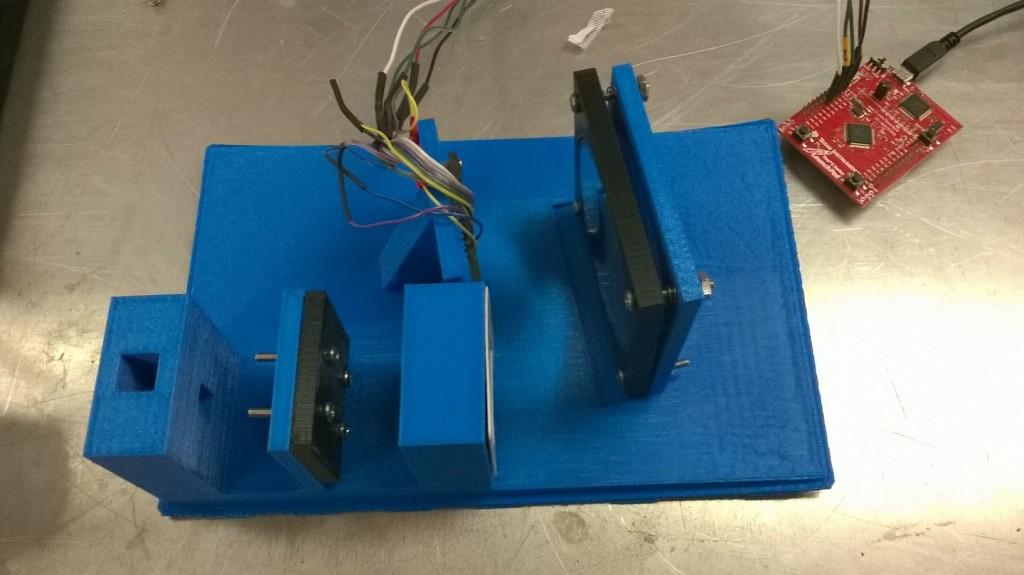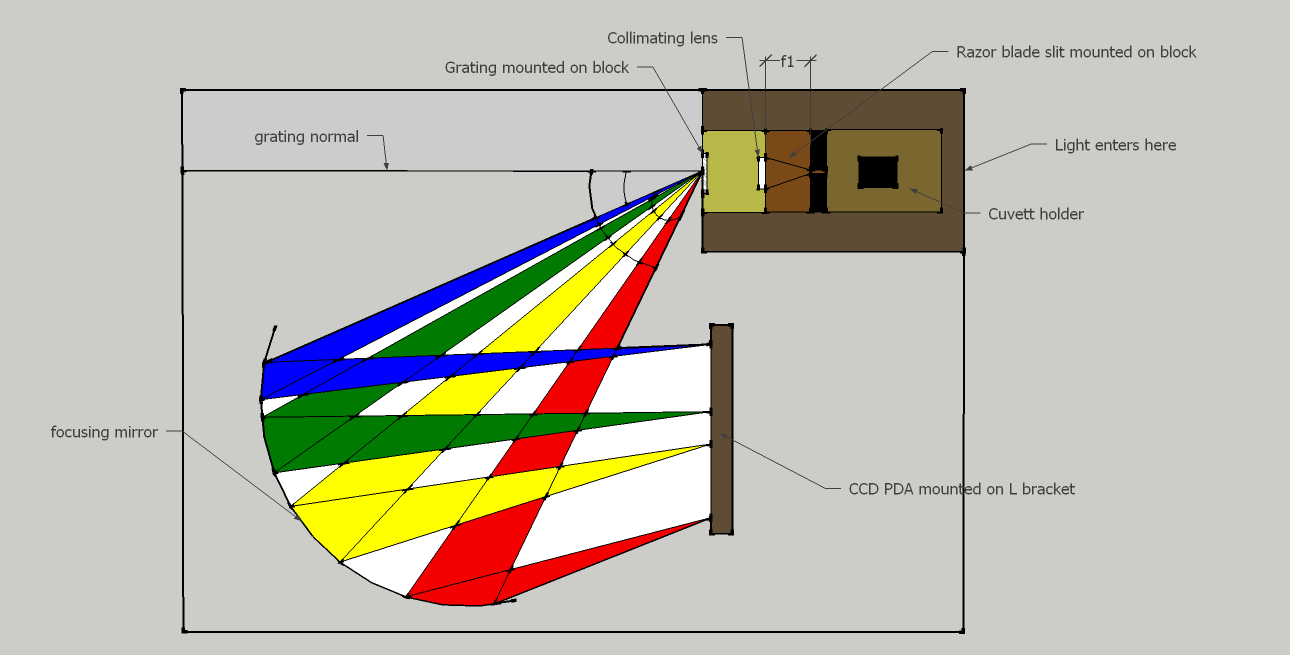As an undergraduate and graduate student, Ben Hickman, under the advisorship of Dr. Jack Summers, began developing an affordable chemistry instrument called a potentiostat. This sparked his interest in electronics and programming. After a number of people expressed interest in the potentiostat, including high school science teachers and ordinary citizens interested in monitoring their local water quality, it was evident that there was a demand for affordable chemistry instrumentation. One of the most useful instruments, yet financially out of reach for most, was a UV/Vis spectrometer.
After a few attempts to design a spectrometer using brackets and other components from the local hardware store, it was evident that it was not possible to consistently reproduce the alignment required for a spectrometer. This is where 3D printing and Brian Chee came to the rescue. After a number of attempts and overcoming a steep learning curve in both optics and 3D printing, a working spectrometer was developed.
As part of the publiclab.org movement’s goal to “democratize” investigatory science tools, this project brings together readily available commercial off-the-shelf parts to reduce the entry cost for investigating chemical composition. With a goal of getting the base instrument into the $100 range and using standard cuvettes, this spectrometer can bring spectrometry to even poorly funded educational institutions as well as those concerned citizens who want to monitor their neighborhood.
 Hickman currently works for the University of Hawai’i’s Oceanography department in the School of Ocean and Earth Science and Technology where spectrometry is a way of life. Normally extremely expensive, spectrometers provide a way to map and monitor water chemistry in the world’s oceans. With price tags ranging from the high thousands to the hundreds of thousands of dollars, this type of very basic science instrument is far out of the reach of most high schools and colleges for entry-level lab classes.
Hickman currently works for the University of Hawai’i’s Oceanography department in the School of Ocean and Earth Science and Technology where spectrometry is a way of life. Normally extremely expensive, spectrometers provide a way to map and monitor water chemistry in the world’s oceans. With price tags ranging from the high thousands to the hundreds of thousands of dollars, this type of very basic science instrument is far out of the reach of most high schools and colleges for entry-level lab classes.
What this extremely inexpensive design of the tool does is bring advanced science tools into a price range where educational institutions can afford to investigate chemical makeup and give students practical experience in using one of the most basic and important tools for chemistry, biology, oceanography, ecology, geology, and many other sciences. At the university level, this also means that students can afford a unit for their home and would no longer have to wait in long queues for currently expensive and rare laboratory-based systems. For the home hobbyist, this tool also provides a way to test your water sources to confirm pollution seepage, ways to determine whether aging pipes are introducing unknown compounds to the home, and to bring advanced scientific tools to the hobby level.
The basic operating principle of the spectrometer is to shine a known amount of white light through a sample, split the light that comes through the sample into its different components using a diffraction grating, and then to focus the different components of light onto a charge coupled device (CCD) detection device which can tell how much of each of the components made it through the sample. This can help in determining what atoms or molecules are in the sample and how much of each are present. This works because each atom or molecule will absorb only certain components of light, which gives each atom or molecule a sort of fingerprint, which will show up on the spectrometer’s output.
The next big step is to collaborate with science educators to create a curriculum that incorporates the use of a spectrometer in the classroom or lab rather than just as an abstract lecture.
Some of the future projects include:
- Add fluorescence measurement capability to the spectrometer
- Upgrading GUI system for multiple computing platforms
- Design of automated injection system to automate sample handling
- Turbidity and CDOM — sensors to determine water quality
- Design of an autonomous data logger so instruments can be left in the field
Let us know what you think of their design project in the 3D Printed Open Source Spectrometer forum thread over at 3DPB.com.
Brian Chee is an IT Specialist for the University of Hawai’i at Mānoa’s School of Ocean and Earth Science and Technology (SOEST), is a Co-Host of This Week in Enterprise Technology on the TWiT.tv network, and is a Senior Contributing Editor for InfoWorld Magazine.
Ben Hickman currently works for the SOEST.
Subscribe to Our Email Newsletter
Stay up-to-date on all the latest news from the 3D printing industry and receive information and offers from third party vendors.
You May Also Like
Profiling a Construction 3D Printing Pioneer: US Army Corps of Engineers’ Megan Kreiger
The world of construction 3D printing is still so new that the true experts can probably be counted on two hands. Among them is Megan Kreiger, Portfolio Manager of Additive...
US Army Corps of Engineers Taps Lincoln Electric & Eaton for Largest 3D Printed US Civil Works Part
The Soo Locks sit on the US-Canadian border, enabling maritime travel between Lake Superior and Lake Huron, from which ships can reach the rest of the Great Lakes. Crafts carrying...
Construction 3D Printing CEO Reflects on Being Female in Construction
Natalie Wadley, CEO of ChangeMaker3D, could hear the words of her daughter sitting next to her resounding in her head. “Mum, MUM, you’ve won!” Wadley had just won the prestigious...
1Print to Commercialize 3D Printed Coastal Resilience Solutions
1Print, a company that specializes in deploying additive construction (AC) for infrastructure projects, has entered an agreement with the University of Miami (UM) to accelerate commercialization of the SEAHIVE shoreline...































